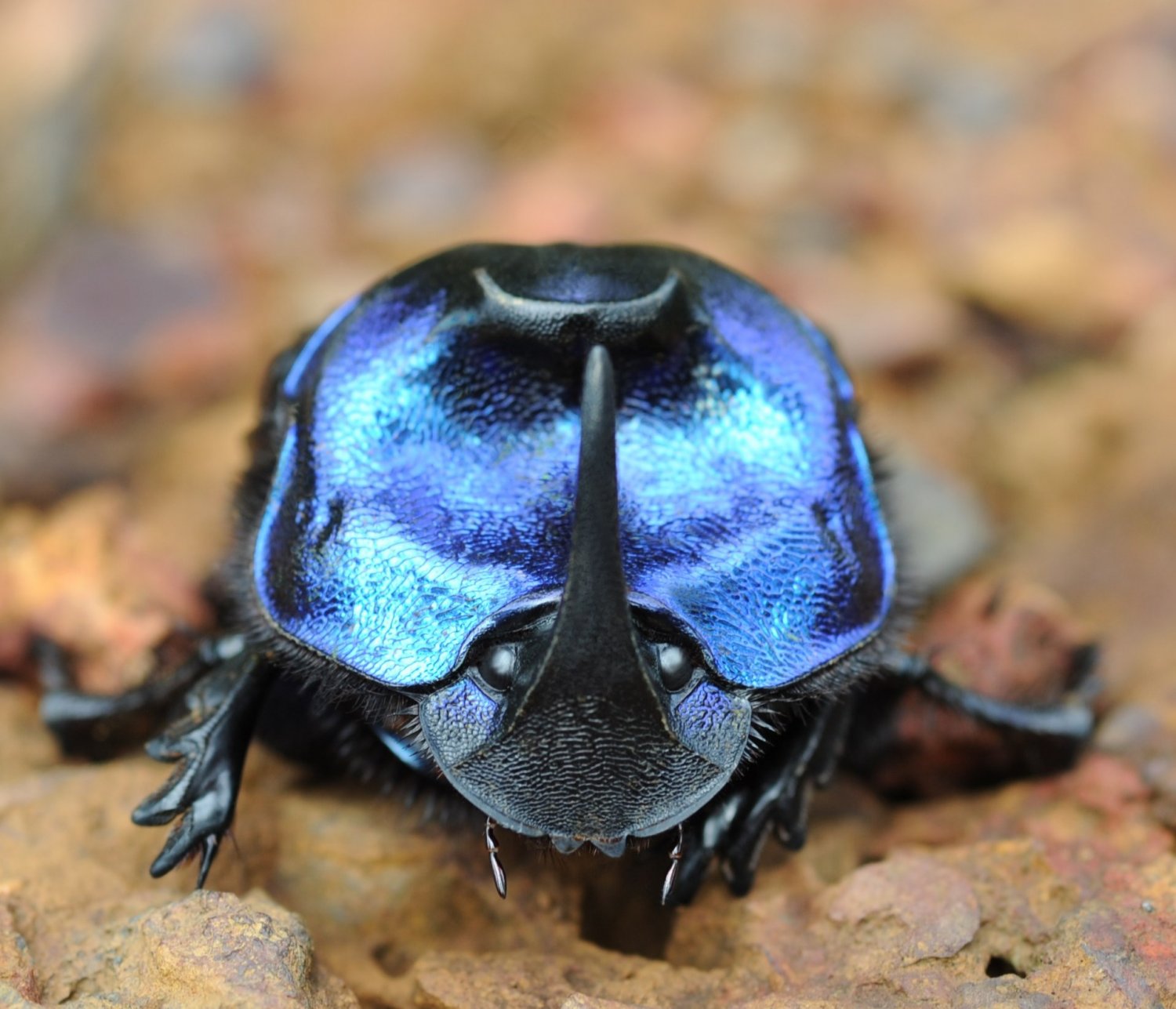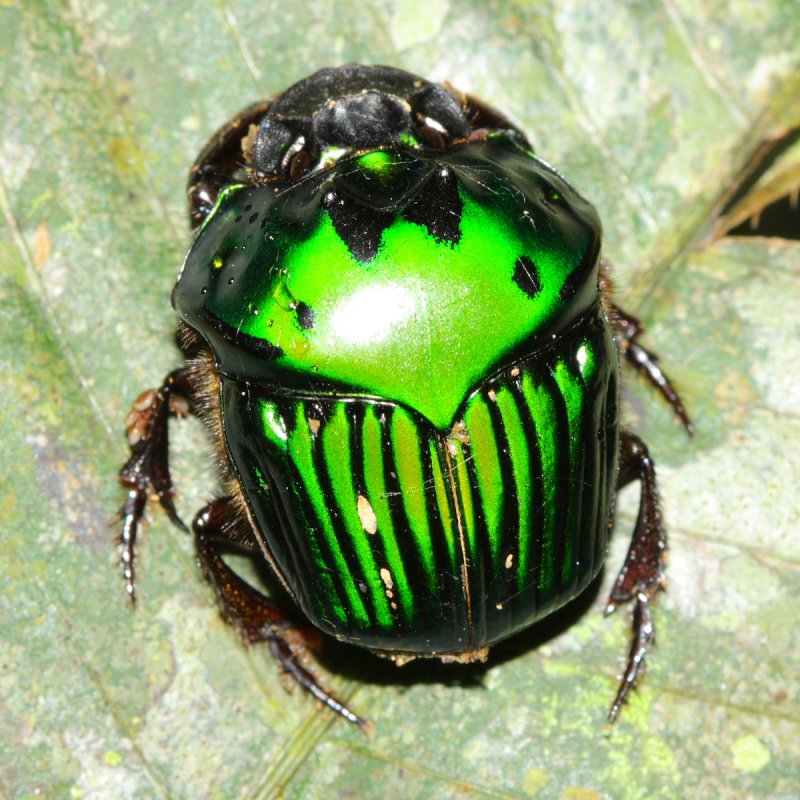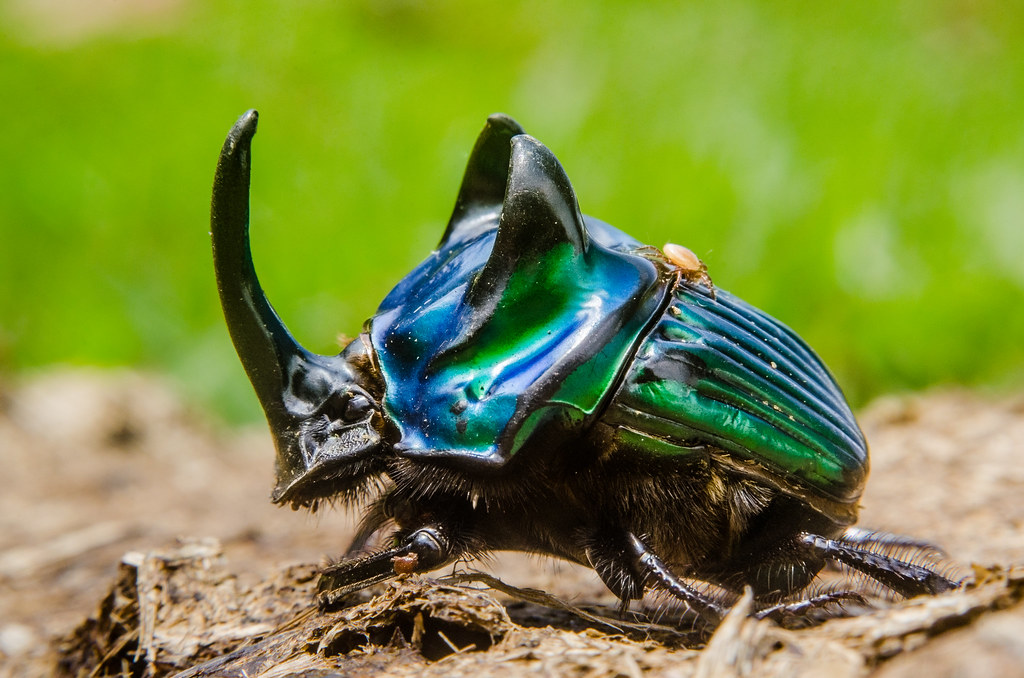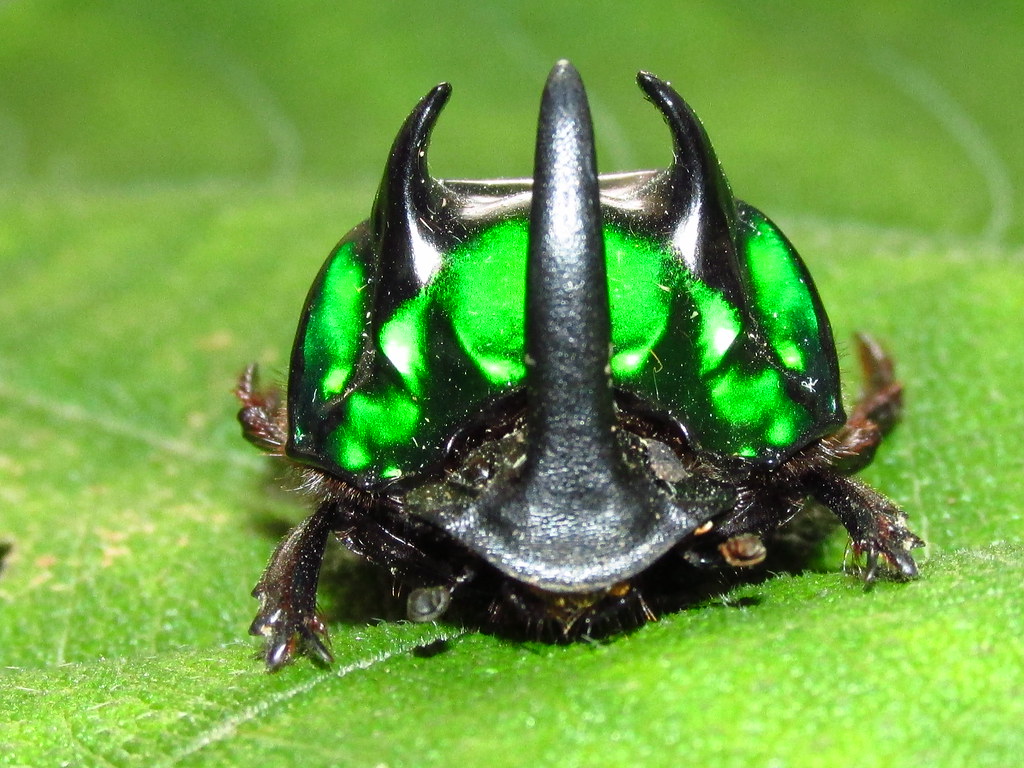Davehuth,
I have worked with a similar species here (Louisiana). If you use cow or horse dung it really doesn't smell for very long (dry dung would not work well). You could also try banana slices if you can't manage dung - but just for keeping adults alive, they will not lay eggs on banana. When I was working on the dung beetle book, I kept large plastic breeding totes in a spare bathroom and never noticed the smell in any other room.
I DO NOT suggest using human or dog. Both work great for collecting in the field but would not be pleasant to work with in captivity. I could make a list of reasons why you shouldn't use these but you can probably already figure out most of the list.
If you are looking to breed them, you would need rather deep substrate (just dirt is fine in this case), Place dung on the surface and replace when it is gone.
Of the geotrupids that use dung for egg laying (like the species in your photo; many other geotrupids do not use dung) - they are paracoprids (tunnelers), not endocoprids as JKim suggested.
Yours might be Geotrupes blackburnii, or a closely relates species.
Good Luck!
Steven














